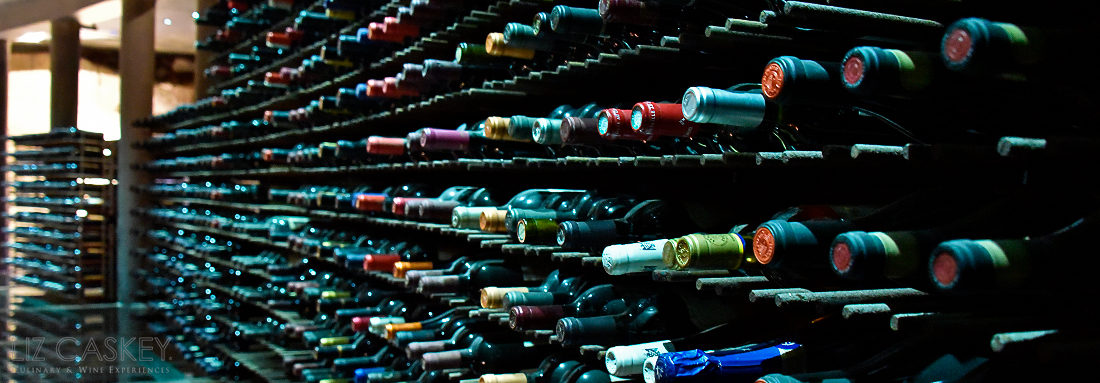
Alan York, Biodynamics master-extraordinaire looks in his mid-50s. He has thick, shiny, silver hair cut stylishly, framing his tanned and weathered face with tiny, piercing eyes. His voice sounds youthful with speech that is paused and thoughtful. There is something slightly hippie in the way he pronounces and lets the words roll off his tongue that makes me imagine him in 1970s California saying “Peace Out”. In actuality, he is a hippie. He is a wine hippie. He is bringing winemaking back to nature, or at least that’s what he’s trying to do.
Earlier this week, a select group of journalists and wine-related personalities in Chile were invited to the eastern end of the Aconcagua Valley, 1.5 hours north of Santiago, by Viña Errazuriz to check out the latest happenings of its premium icon wine, Seña, which has enlisted the help of Alan York in giving a total facelift to its winemaking philosophy. Here we got to tour the vineyard, meet Alan York, enjoy a swish picnic on top of the terraces with a fabulous view of the entire valley, and of course, try the famed Seña.
A Crash Course in Biodynamics
Biodynamics is often thought of as the first cousin of organic winemaking. Its name is derived from two Greek words: “bios”, meaning life, and “dynamic”, meaning it expresses energy. Its basic philosophy, as put by Mr. York, is “having a hand fit in a glove”. At a glance, Biodynamics seems to fall somewhere between hocus-pocus, black magic, niche marketing and a ritual and faith-based horticultural process. It was created in the 1920s by the Austrian Rudolph Steiner.
The overriding principal of Biodynamics is that each vineyard is a live being and has its own individuality. No doubt here we can jump into the on-going discussion on the authenticity of wines and that abused and over-used word, authentic. I am going to save that debate for later in the piece. For now, let’s give Biodynamics the benefit of the doubt. To rapidly paraphrase, based on the four elements (air, water, earth, fire), Biodynamics seeks to find balance and harmony for the vines in their natural environment, aligning agricultural practices with the cycles throughout the year and symbolic components such as the fertility of the cow and other herbs. The final objective is to create a wine that is the most natural and singular expression of the earth where the vines are grown, not unlike the A.O.C. in France, or the “Estate wines” in the New World. The vineyard must follow the strict agriculture rules set forth by the Demeter Association for 36 months in order to be certified as a Biodynamic vineyard (and wine).
During our visit, Mr. York explained and showed us a demonstration of Preparation 500, one of the various “rules” (or rituals, as I would call them) in Biodynamics. Preparation 500 prepares the soil to fertilize the vines. Basically, cow horns (of a female cow, which are considered “sacred” in Biodynamics) are filled with cow manure and buried curved-side downwards in the most fertile patch of soil on the property (in this case it was in a ravine/oasis) on the spring equinox. Okay, I will admit, I was suspicious at this point. Spring equinox? Sacred cow horns? Cow dung? It gets better. To prepare the fertile manure, which is dug up at the fall equinox, you must hollow out the cow horns and then stir the cow dung around in a vortex motion; that is, a rhythmic circular motion for an hour. This is then diluted with water and spread around the vines. Why a vortex? Well, this is how the energy of the universe circulates and creates matter so since the point here is to infuse energy (life force) and levity into the soil, this is considered key.
As I listened to Mr. York explain the different “preparations”, I got more and more skeptical; this seemed to border on an existential philosophy lecture in college. He spoke of polar sprays, life forces, cornucopias, expressions, energetic levels, all of these fine tune those little grapes to not need intervention in winemaking, supposedly harmonizing all the internal chemistry so as to not need yeast, sulphurs, etc. Hmmm... I will say that his passion and knowledge of the material was impressive but however, now a non-believer, I just couldn’t take it at face value. All I kept thinking was, “So how will this new, improved, Biodynamic Seña taste? What is Biodynamics really going to do to the wine? We there be a palatable difference? How do we know that is Biodynamics?” Good question(s).
The Debate on “Authentic” Wines
Before continuing, I want to interject this worthwhile topic on the debate surrounding “authentic” wines. It is quite relevant before I plunge into how this applies to Seña. This first run-in with Biodynamics definitely raised my eyebrows with suspicions as it rests more on the stars than on science. It also reinforced the undying presence of these buzz words “real”, “authentic”, “natural”, “hand made”, “traditional” that keep reappearing again and again in the wine world. So what does this “back to nature” call really mean? Wine is being “less” intervened than before? I read an interesting recent post by wine blogger, Huge Johnson, that sustains that if it wasn’t for man intervening in the winemaking process, all we would have is vinegar. That’s all nature makes. He asserts that these recent claims for authenticity are in part from demand from consumers wanting assurance as to where there wines are coming from and how they are made. This is also known as Marketing. These tendencies to “return to nature” didn’t really appear in the wine industry until the mega multinational wine companies began to emerge. He continues on in the article probing the “industrialization” of wine and what that means for the supposed magic and uniqueness (like the “art” and terroir concepts) of winemaking. It is a great worthwhile read; for full article continue here.
So are there any “authentic” wines out there? Yes, I think so. I find that they are usually the small producers. Those garage or small wineries that make their wines by hand; trying to define and express their terroir. It has just become blurry to define which are the ones that are purely well-marketed versus the ones that are truly well made. Remember, biodynamic wines don’t guarantee good wine, but they are always authentic I suppose. I am interested to see what the 360 degree spin in Seña’s winemaking philosophy will produce. It is a big gamble. The larger question though—is it quality or market driven? Or both?
Seña is leaving its Sign
For those of you not entirely familiar with Seña, let’s start with a little background on the winery and its wine. It is, after all, one of Chile’s finest. Seña in Spanish means a distinguished personal signature. It is considered the first “luxury” wine in Chile. Back in the 1980s, when Robert Mondavi paid a visit to Chile, he saw the potential for Chile to produce world class wines. Later, in 1995, Mondovi formed a partnership with Viña Errazuriz, one of Chile’s traditional, historic wineries, to make Seña as their “icon” wine. Last year, Mondavi cashed out after the huge Constellation Brands buy-out and Seña became full property of Errazuriz, under the leadership of Eduardo Chadwick.
The vineyards are located to the north of Santiago, in the Aconcagua Valley. In particular, Seña lies in a micro valley that gets a fair amount of fog, only 41 kilometers from the Pacific Ocean. This means that the temperatures are lower than other parts of the valley, allowing the grapes to mature fully but slowly. Although the original blend has been the three classic Bordeaux varieties: Cabernet Sauvignon, Merlot, and Carmenere (which every Chilean winery wants a piece of), they are now planting Cabernet Franc, Petit Verdot, Malbec and a miniscule amount of Syrah. The future final blends will depend on the harvest quality of each grape. During our visit, they were prepping the vineyard for planting and carving out some impressive terraces out of one of the hillsides. Seña has definitely invested time and effort in landscaping and having the vineyard meld into the natural landscape with beautiful espinos, yellow-flowered bushy-type trees, Poplar groves, small, gushing rivers, flowers, and curvy roads that show off their vines.
Now, all this being said, I want you to better understand the path that has led them to Biodynamics; or my impression based on this visit. Seña was hitched up for 10 years with Mondavi, which love Mondavi or not, their huge international recognition and legacy not only validate the brand, they also sell it. So what happens when you take them out of the picture? A scramble for identity. Seña suddenly needs to reassess its niche in the market; how to get to its market; how to position itself; how to distinguish itself from the steep competition in “world class” wines (Seña runs about US$100 per bottle, fyi). Basically, there is no more wine sugar daddy to fall back on. Therefore, it makes sense to a certain extent to start a new chapter. Go in a totally new direction. Define themselves, well Seña, as wine that is totally different and not dependent on the Mondavi association. Biodynamics is a tempting vehicle to realize this high goal. To me, it seemed somewhere between a genuine initiative, a leap of faith, a calculated gamble, and definitely a potential marketing ploy. I will give them credit, it’s ballsy. The stakes are high. This is their best. They are placing their bets that this is going to keep them flying higher and higher. Time will tell if Biodynamics pays the dividends they are expecting.












